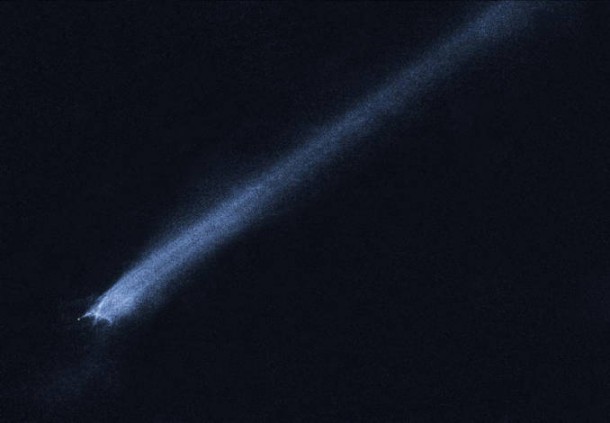GLOBAL. The idea that an asteroid could strike earth and cause widespread damage and devastation is not entirely a myth. On May 3 an asteroid named 2014 HL129 passed near Earth — the closest this 25-foot long asteroid has ever been to our planet. While this asteroid did not cause any damage, this asteroid’s orbit serves to remind us that we are merely a dot in a vast universe at the mercy of the complex interactions of celestial bodies. Luckily for us, large asteroid collisions with the earth are an extremely rare event. In addition, our detection technology asserts that it is exceedingly unlikely that we experience a serious asteroid strike within the next hundred years. ROOSTERGNN spoke with Al Globus, an expert on space, to discuss the nature of asteroids, and the potential threat they poise.
Mr. Globus dispelled the popular misconceptions that the risk of an asteroid striking Earth increases over time and that it is impacted by global warming. In addition, he asserted that while an asteroid strike is not exceedingly likely, we have the potential to almost fully eradicate the risk of what one could call devastating event.
An asteroid called HL 129, about 7.6 meters wide, passed close to Earth on May 3. What constitutes “close” to Earth?
Al Globus: Depends on the author. Usually they mean inside the Moon’s orbit, or perhaps below communication satellites in geosynchronous orbit.
What sort of impact would an asteroid of this size have on Earth?
Depends on the composition. It if was metallic it would get much lower than if it is stoney. However, at this size most will burn up in the atmosphere with only small pieces falling to Earth.
What is the current probability of an asteroid striking Earth?
Depends on the size. Little ones hit every day. A city killer once or twice a century. Extinction event about every 100 million years (it’s been 66 million years). These, of course, are averages. We could get an extinction event tomorrow — or not for 200 million years.
Fortunately, we know where almost all of the big asteroids (extinction event) that could hit Earth are and none of them will hit us for at least 100 years. We don’t know where 90% of the somewhat smaller asteroids are — ones that could devastate a region (say, the Eastern seaboard). We only know the location of 1% of the city killers.
Even better, if we detect an incoming asteroid in time we could deflect it. Thus, if we were to mount a vigorous detection campaign we could make the probability essentially zero. This would cost around 1% of our civil space program budget. See http://space.alglobus.net/papers/PlanetaryDefensePolicy2014.pdf which is close to the NSS position on the matter.
With the asteroid that exploded above Russia in February of last year, we saw that the atmosphere helps protect us from asteroids. However, to what extent?
Small ones burn up in the atmosphere. The Russian asteroid never touched the ground, thanks to the atmosphere, but of course the blast can cause damage (and did).
***
Al Globus has worked on the asteroid mining, space settlement, Hubble, ISS, X37, Earth observation, TDRSS, cubesats, lunar teleoperation, spaceflight affects on bone, computational fluid dynamics visualization, molecular nanotechnology and space solar power. He founded and has run the annual NASA Ames Space Settlement Student Design Contest for 22 years. He currently sits on the board of the National Space Society.

